Sher-e-Panjab Maharaja Ranjit Singh
In the early 19th century, Panjab, the land of five rivers, was ruled by a man whose ideals were secular in nature. Maharaja Ranjit Singh, famously called ‘Sher-e-Panjab’ (Lion of Panjab) was known to be a fierce king who established a reign based on diversity and equality. He was born in the winter season of 1776 at Gujranwala (now in Pakistan). His parents were Sardar Mahan Singh Shukarchakia and Mai Raj Kaur. Not a lot about his childhood is documented except the widely known ‘smallpox’ incident in which he lost vision in his left eye while tending to the people who suffered with smallpox. To this date, there is only one painting of Maharaja Ranjit Singh (by Emily Eden) which is considered to be in proximity with how he looked. The other paintings are based on hearsay.

Maharaja Ranjit Singh, Maharaja of Sikh Empire
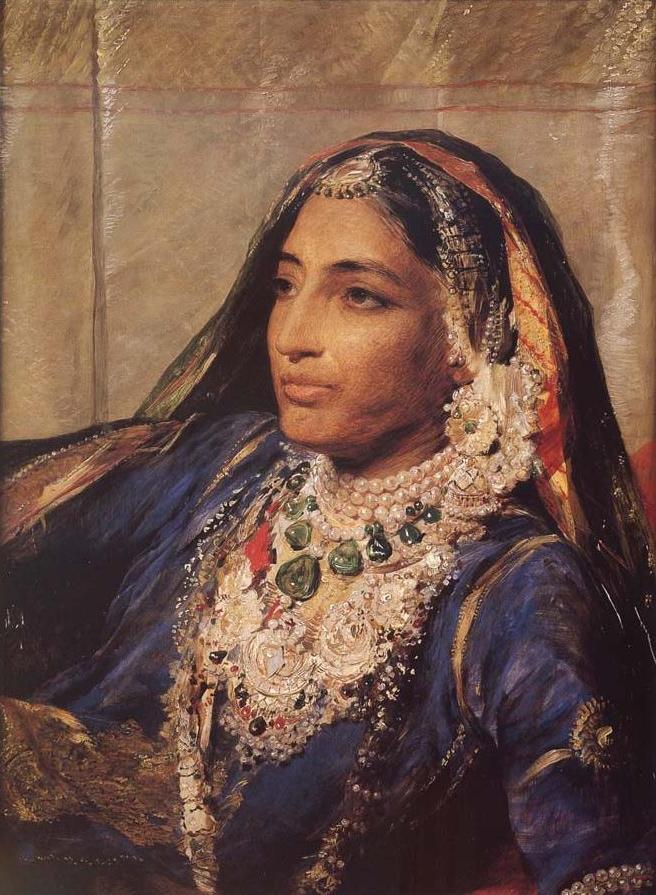
Maharani Jind Kaur, 1817-1863 (last wife of Maharaja Ranjit Singh and mother of Duleep Singh)
During the 18th century there were 12 misls (a Sikh sovereign constituency) and before Ranjit Singh rose to power, his elders established their own misl, named ‘Shukarchakia’. The misl was constituted of brave warriors and administrators who occupied large tracts of land in modern day Panjab and surrounding states. Ranjit Singh's father, Sardar Mahan Singh was the chief of the Sukerchakia misl at that time. After the demise of his father in 1790, Ranjit Singh became the leader of the misl and married Mehtab Kaur in 1795-96. As a result of this marriage alliance, Rani Sada Kaur, Ranjit Singh’s mother-in-law became a part of the family. She became an advisor to Ranjit Singh and during this phase, Singh and his misl prospered. Around this time, Panjab was divided into various independent misls which led to rampant factionalism. In order to bring peace and unity, Ranjit Singh decided to establish united rule in Panjab and started working towards it.
Although Ranjit Singh married multiple times, he only considered two among his eight sons as the rightful heirs to his throne. The first heir was Kharak Singh (from his second marriage with Maharani Raj Kaur). The final heir to his throne was his son, Duleep Singh from his last wife Maharani Jind Kaur.
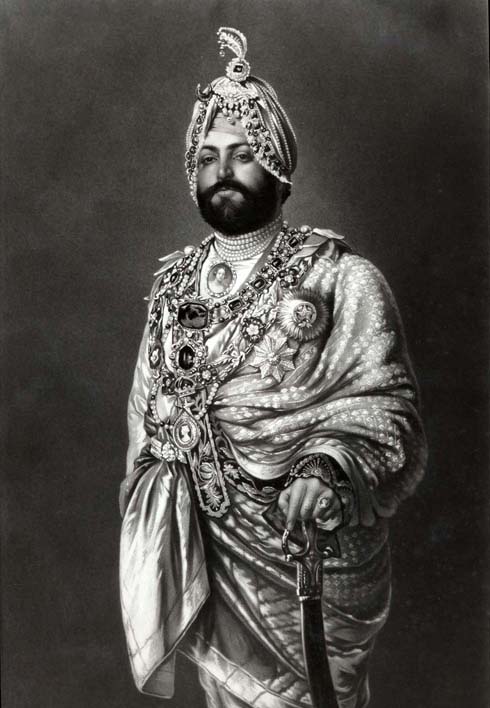
Maharaja Duleep Singh
It all began from Lahore and Amritsar
Ahmad Shah Durrani, also known as Ahmad Shah Abdali was the founder of the Durrani Empire. He ruled Afghanistan from 1747–1772 and is known to have attempted eight attacks on India. During his sixth invasion in 1762, he mercilessly killed thousands of people of Lahore and Amritsar and destroyed many holy places and shrines. One such place was Harmandir Sahib. Durrani’s assaults are recalled till today in the form of an old Panjabi saying:
Khadda Pita Lahe Da, Rehnda Ahmed Shahe Da (Whatever you consumed, belongs to you; the rest will go to Ahmad Shah). Shah Zaman, grandson of Ahmed Shah Durrani became the king in Kabul in 1783. He attempted to invade India in 1793, 1795 and 1796. After failing in all three attacks, he invaded India for the fourth time in 1798 and occupied Lahore. Shah Zaman eventually faced defeat and went back to his country, Afghanistan. After the exit of Shah Zaman, the city of Lahore was re-occupied by Sardars of the Bhangi misl. Internal conflicts led to multiple failures at the administrative level resulting in poor protection of the city and its populace. Assessing the situation, the people of Lahore wrote a petition to Ranjit Singh as they had heard of his magnificence and kingship. Upon reading the letter, Singh called for Gurmatta (an assembly) and consulted his mother-in-law for a joint attack as she was from the Kanhaiya misl. He thus captured Lahore on 16th July 1799. He captured the Fort of the Bhangis and re-named it as ‘Gobindgarh Fort’ after the name of tenth Sikh guru, Guru Gobind Singh Ji. He also took the Zamzama Cannon which was an unparalleled cannon at that time, in his possession. It is now in Lahore, Pakistan.
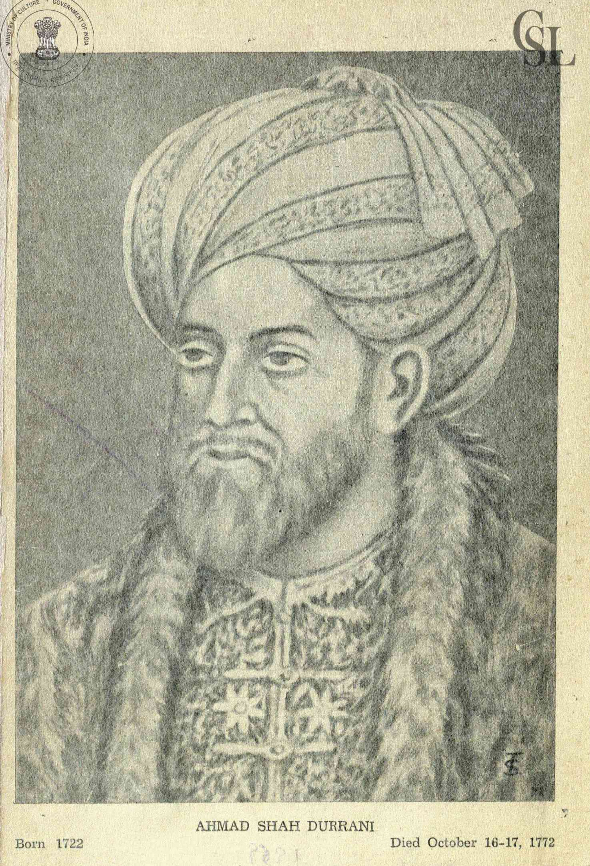
Ahmad Shah Durrani
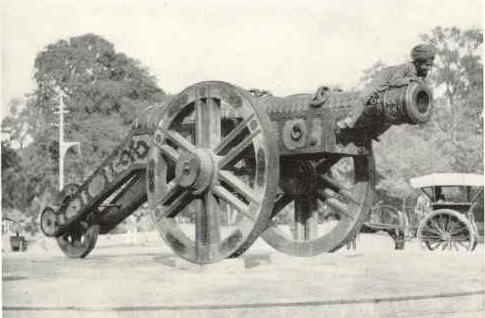
Zamzama Cannon (now in Lahore, Pakistan)
After the successful extension of the empire, Maharaja Ranjit Singh visited Harmandir Sahib to seek blessings and as a token of his devotion, he vowed to cover the Gurudwara Sahib in gold and this is the reason why today, the much revered Harmandir Sahib Gurudwara is also known as ‘Golden Temple’. Interestingly, on learning about the Gurudwara’s reconstruction, the Nizam of Hyderabad, Asaf Jah VII Mir Osman Ali Khan, sent donations for the same purpose.
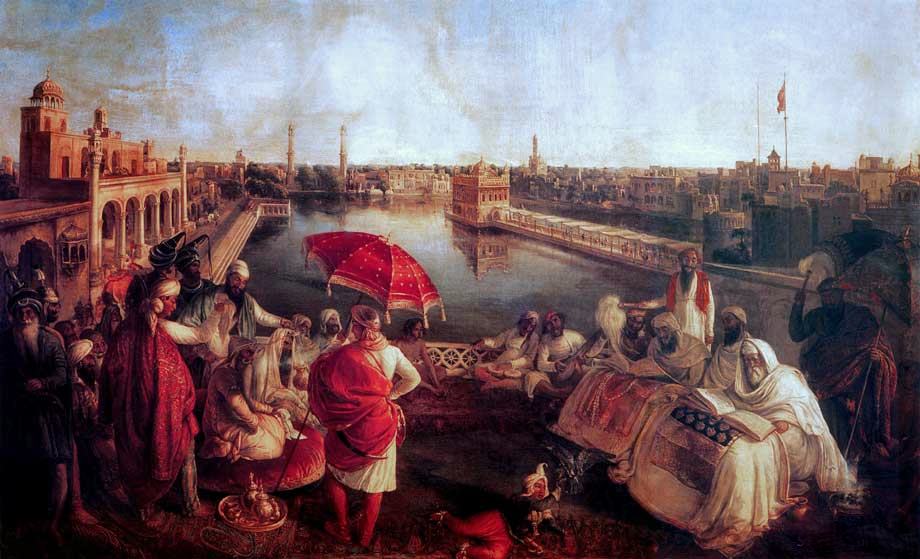
Maharaja Ranjit Singh at Golden Temple, Amritsar, India; listening to hymns from Guru Granth Sahib.
A turning point during the rule was the Treaty of Amritsar in 1809. It is also known as the ‘Minto-Metcalfe’ Treaty. Both the parties, that is, Maharaja Ranjit Singh and Charles Theophilus Metcalfe of the British East India Company entered into a pact signifying a friendship between them. Ranjit Singh wanted to bring the Cis-Sutlej states under his dominion and this treaty benefited him as it allowed him to conquer places like Kashmir and Peshawar. The British on the other hand wanted the Northern borders secured, which Maharaja Ranjit Singh ensured.
The glorious Lahore Durbar
In 1801, Ranjit Singh was honoured with the title of Maharaja on the day of Baisakhi, a festival that marks the start of harvest season in Northern India. He decided to extend his empire from Lahore which served as his capital from 1799 onwards. Ranjit Singh captured Kangra by 1806, Attock by 1813 and Multan by 1818. During his reign, the ‘Nanakshahi’ coins were minted in gold and silver. Maharaja Ranjit Singh also engraved the names of various Sikh Gurus on these coins. A shrewd and diplomatic leader, his court was filled with nobles from various religions. Maharaja Ranjit Singh was aware of the diversity present within and outside the kingdom and realised that mere conquests and expansion would not make him a complete leader, he would also need to take the people along.

Maharaja Ranjit Singh’s Throne

Court of Lahore
Amidst the wars and battles, he was also able to acquire the famous Koh-i-noor diamond and Timur Ruby. In order to keep his combat techniques updated, Maharaja Ranjit Singh employed a Frenchman called Jean Francois Allard as his Army Chief. Allard was given the task of modernising Ranjit Singh’s army and commanding Singh’s special regiment called Fauj-i-Khas, who were known to be fearless. Allard accomplished this along with his colleague General Ventura who was an Italian.
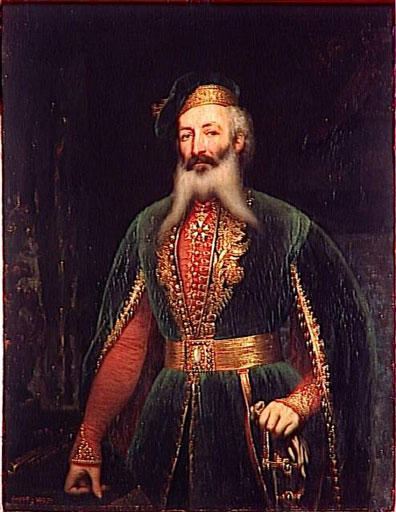
General Jean-François Allard
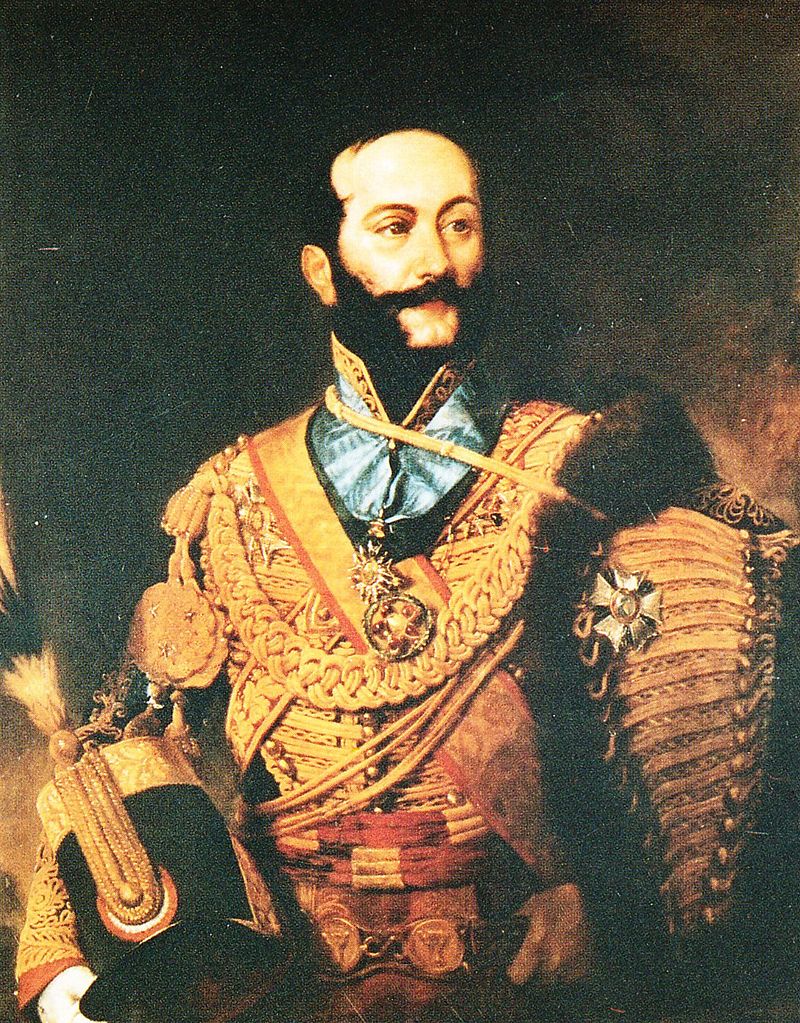
General Jean-Baptiste Ventura
Triumphs which framed History
A great part of the legacy of Maharaja Ranjit Singh is his conquest of Kashmir, Hazara, Peshawar and Khyber Pakhtunkhwa and the subsequent consolidation of the north-western frontier. He conquered Kashmir in 1819, Hazara in 1820 and Peshawar and Khyber Pakhtunkhwa in 1834.
Kashmir at that time was under the rule of Jabbar Khan. It is known that after learning about the cruelties perpetrated under the rule of Jabbar Khan and the threat of Pathans from the neighbourhood, the Maharaja started the preparation for conquering Kashmir.
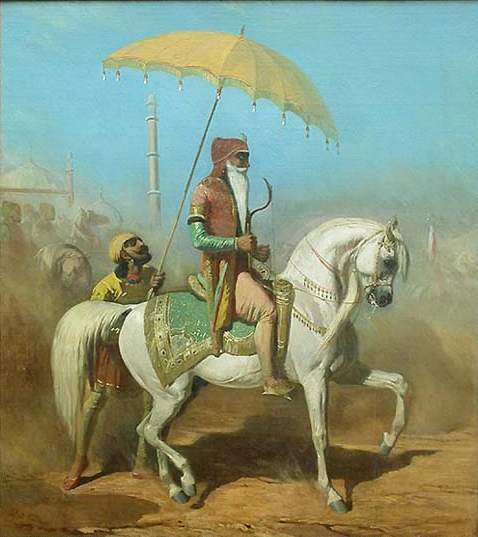
Maharaja Ranjit Singh by Alfred de Dreux

Hari Singh Nalwa, Commander of Maharaja Ranjit Singh’s Army
The Khalsa Army was confronted with the Pathan Army under the leadership of Jabbar Khan on the plains of Shupaiyan. Maharaja Ranjit Singh was victorious and entered Srinagar in July 1819. He is known to have paid particular attention to the prosperity of Kashmir. To ensure restoration of order in the administration and to look after the comforts and needs of the people, Diwan Moti Ram was appointed as the ruler of Kashmir. Upon realising the failures and ineffectiveness of Diwan, he was removed and replaced with Hari Singh Nalwa.
Along with his commander General Hari Singh Nalwa who later became the Governor of Peshawar, Ranjit Singh annexed Peshawar and Khyber Pakhtunkhwa region in 1823. This battle holds an important place in the history of Sikh Empire and British India. The occupation arrested the ingress of the enemy from North-Western borders of India and extended the Sikh empire towards the west of Indus. Due to this achievement, all these regions, that is, Kashmir along with the entire trans-Indus territories, became a part of the British Empire after the Anglo-Sikh War II. Hence, the magnificent empire of Maharaja Ranjit Singh and his achievements carry an international importance.
End of an Era
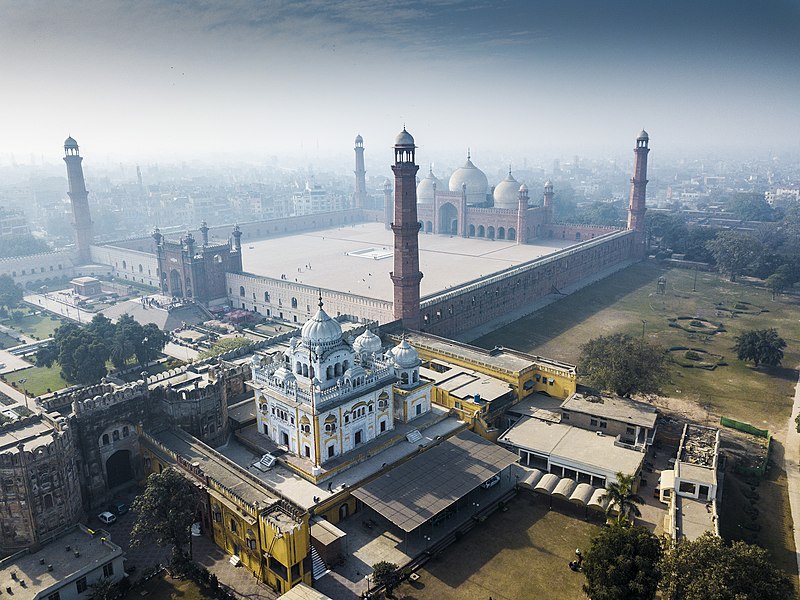
Samadhi of Maharaja Ranjit Singh (now in Lahore, Pakistan)
Maharaja Ranjit Singh passed away in Lahore Fort on 27 June 1839. His ashes are kept in the monument called ‘Samadhi of Maharaja Ranjit Singh’, next to the famous Badshahi Mosque, in Lahore, Pakistan. Post his death, the Sikh empire and the British East India Company engaged in the First Anglo-Sikh War (1845-46) which led to the defeat of the former. One of the major consequences of the war was that the Sikh Empire lost Kashmir to the British who made it a separate princely State. Teja Singh, a Sikh commander and some others are known to have committed treason which led to the eventual defeat of the Sikh Empire. With the penetration of treachery and factionalism in Maharaja's Empire and British interference in the government, the Sikh Empire entered into the Second Anglo-Sikh War (1848-49). Panjab was annexed by the British in 1849 and Lahore came under British rule. Alexander Gardner, a colonel in Ranjit Singh’s army is known to have witnessed and written about the fall of a sovereign empire.
The last ruler of the Sikh Empire was Maharaja’s youngest son, Duleep Singh. He was only five years old when the throne was passed on to him under the regency of his mother Rani Jindan Kaur. .
Both Duleep Singh and his mother lived in Lahore. After losing the battle, both Duleep Singh and his mother were exiled to Churnar in 1848. Eventually, Duleep Singh was separated from his mother and was raised by a Missionary in England. He attended the Court of Queen Victoria who is said to have been very fond of him.
The one eyed King’s empire ranged over modern Panjab, Himachal Pradesh, Kashmir, Gilgit (now in Pakistan), Ladakh, Peshawar and Khyber Pakhtunkhwa (now in Pakistan).
Once Ranjit Singh’s foreign minister and adviser, Fakir Azizuddin was asked by British Governor-General George Eden about the Maharaja’s missing eye, to which he is said to have responded: ‘The Maharajah is like the sun and the sun has only one eye. The splendor and luminosity of his single eye is so much that I have never dared to look at his other eye.’
 Government of Indiaa
Government of Indiaa

 Recognizing the ongoing need to position itself for the digital future, Indian Culture is an initiative by the Ministry of Culture. A platform that hosts data of cultural relevance from various repositories and institutions all over India.
Recognizing the ongoing need to position itself for the digital future, Indian Culture is an initiative by the Ministry of Culture. A platform that hosts data of cultural relevance from various repositories and institutions all over India.
